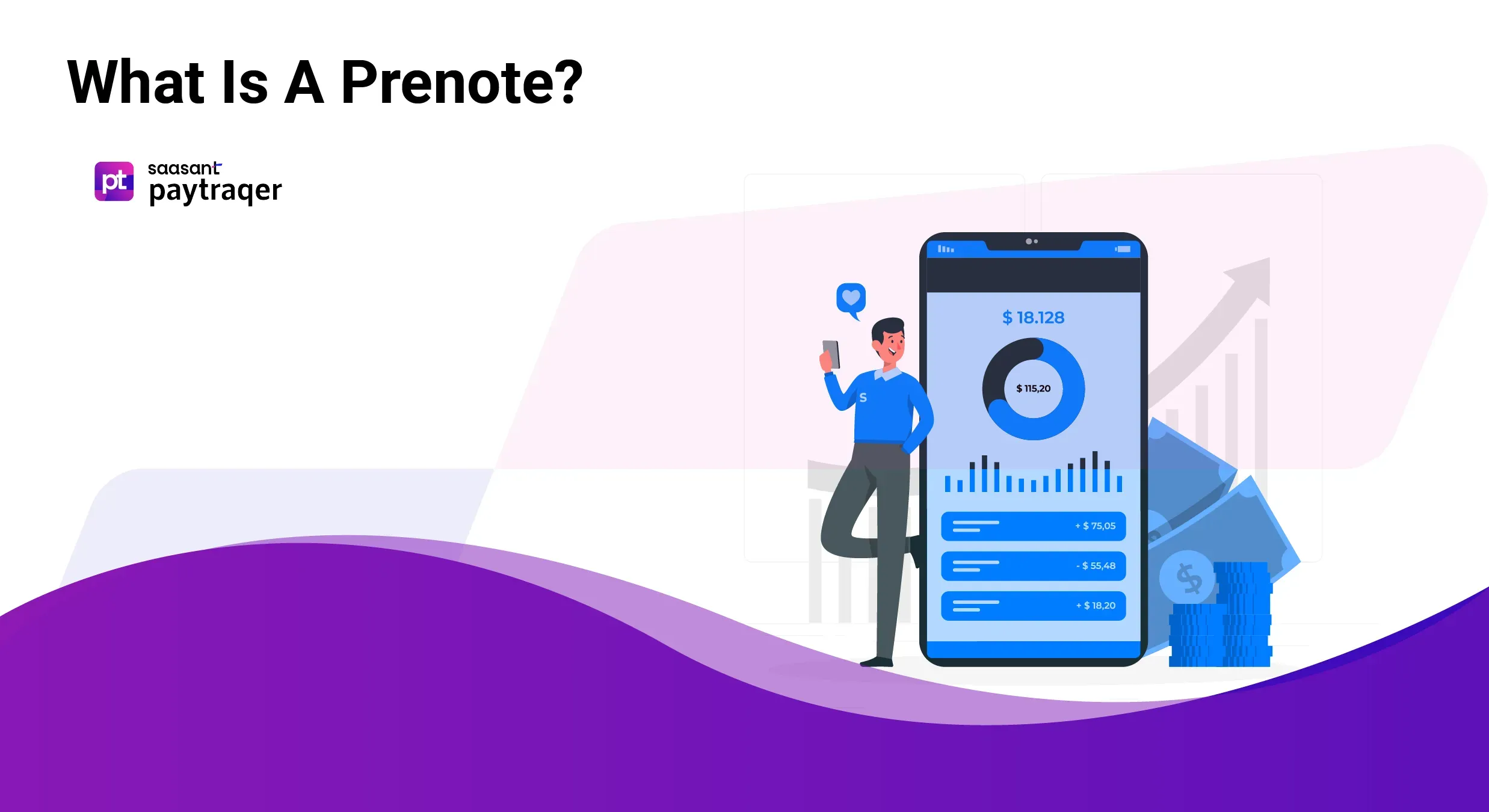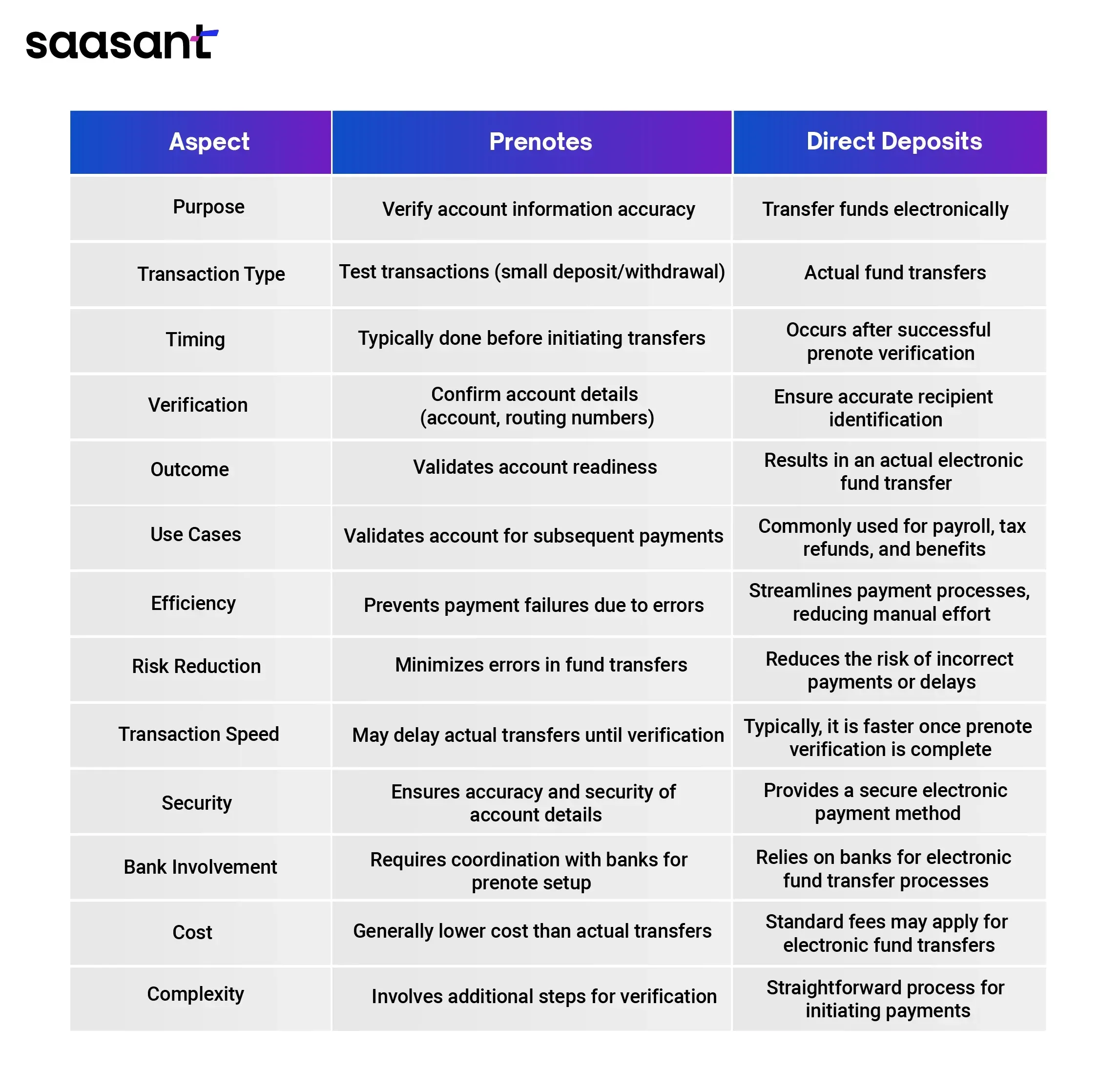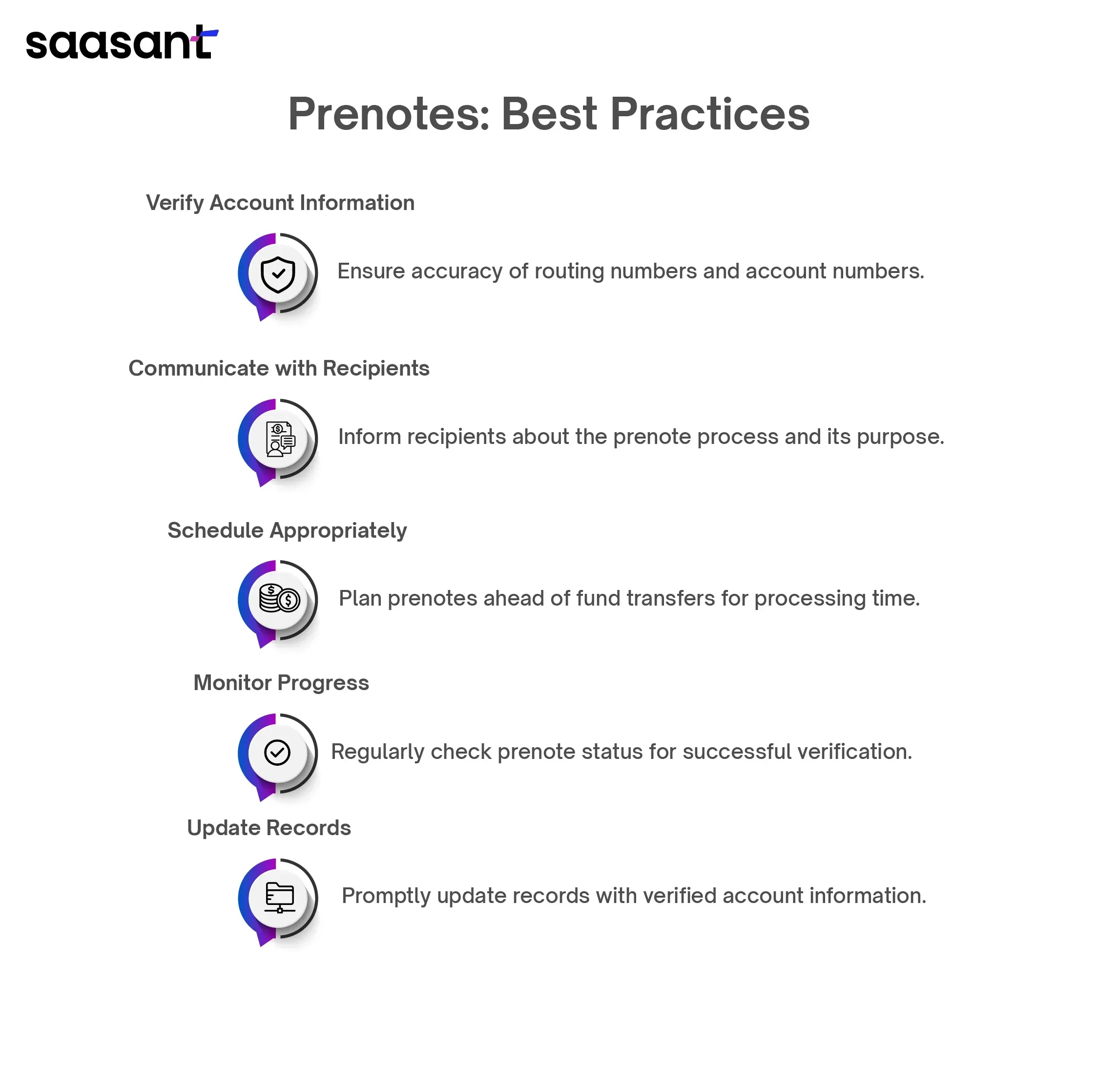What does Prenote mean?

Discover the power of prenotes in streamlining electronic fund transfers. Prenotes are crucial in verifying account details before initiating transactions, ensuring accuracy and security. This article gives a deeper insight into prenotes, targeting businesses, financial professionals, and individuals involved in electronic fund transfers. Learn how prenotes organize finance, prevent errors, and enhance transaction reliability.
Contents
What is a Prenote?
How do Prenotes Work?
Prenote vs Direct Deposit
Benefits of Prenote
Limitations of Prenote
Best Practices for Using Prenotes
Conclusion
Frequently Asked Questions
What is a Prenote?
A prenote, short for pre-notification, is a preliminary transaction used in electronic fund transfers (EFTs) to verify the validity of account information before actual funds are transferred. It serves as a test transaction, typically sent a few days before the actual payment, to ensure that the recipient's bank account details are accurate and that the transaction can be processed smoothly. Prenotes help prevent payment failures due to incorrect account information, reducing the risk of transaction errors and delays.
How do Prenotes Work?
Prenotes work by sending a test transaction, often a small deposit or withdrawal, to verify the accuracy of account information before processing actual funds transfers. Here's how they typically work:
Initiation: When setting up electronic fund transfers (EFTs) for payments such as direct deposits or automatic withdrawals, the sender (often a business or financial institution) initiates a prenote transaction through the Automated Clearing House (ACH) network.
Verification: The prenote contains the recipient's account details, such as account number and routing number. It is sent to the recipient's bank for verification.
Processing: The recipient's bank processes the prenote to confirm that the account information is correct and matches their records. This step ensures that the actual funds transfer will go through without issues.
Confirmation: Once the prenote is processed and verified, the sender receives confirmation that the recipient's account is valid and ready for electronic transactions.
Actual Funds Transfer: After the prenote confirms the account's validity, the sender proceeds with the funds transfer, such as depositing salaries or electronically making bill payments.
Error Prevention: Prenotes help prevent payment failures due to incorrect account information, reducing the risk of returned transactions, fees, and delays.
Prenote vs Direct Deposit
Knowing the differences between prenotes and direct deposits is vital for effective financial management in electronic fund transfers. This table compares their purposes, processes, and results, emphasizing how they ensure accurate account information and secure fund transfers. Understanding these distinctions helps you navigate payments confidently and with clarity.

Benefits of Prenote
Prenotes offer several advantages in electronic fund transfers:
Account Verification: They validate bank account details before initiating direct deposits or payments, reducing errors and failed transactions.
Compliance Assurance: Prenotes ensure adherence to banking regulations and industry standards, promoting financial transparency and security.
Fraud Prevention: By verifying account information upfront, prenotes help mitigate the risk of fraudulent transactions and unauthorized payments.
Customer Confidence: Successful prenotes build trust with customers by ensuring smooth and accurate fund transfers, enhancing satisfaction and loyalty.
Efficiency: They streamline payment processes by confirming account validity early, minimizing delays and administrative burdens.
Cost Savings: Fewer failed transactions and reduced fraud potential lead to cost savings for businesses and financial institutions.
Limitations of Prenote
While prenotes offer several benefits, they also have limitations to consider:
Time Constraints: Prenotes require additional processing time before initiating transactions, potentially delaying fund transfers compared to direct deposits.
Limited Use Cases: Some financial institutions may not support prenotes for certain transaction types or accounts, limiting their applicability.
Complexity for Recipients: Recipients may need clarification on the prenote process, especially if unfamiliar with its purpose or requirements.
Costs: Depending on the banking institution, there may be fees associated with conducting prenotes, which will add to transaction costs.
Potential Errors: While prenotes aim to reduce errors, incorrect account information during the prenotes phase can still lead to failed transactions or delays.
Best Practices for Using Prenotes

Here are some best practices for using prenotes effectively in electronic fund transfers:
Verify Account Information: Before initiating a prenote, ensure that all account details, including routing numbers and account numbers, are accurate.
Communicate with Recipients: Inform recipients about the prenote process, its purpose, and any actions they may need to take to facilitate smooth fund transfers.
Schedule Appropriately: Plan prenotes well before actual fund transfers to allow for processing time and address any issues that may arise.
Monitor Progress: Regularly check the status of prenotes to confirm successful verification of account information and readiness for direct deposits.
Update Records: Update your records promptly with verified account information after completing prenotes to ensure accurate future transactions.
Conclusion
Prenotes play a vital role in ensuring the accuracy and security of electronic fund transfers. While they offer benefits such as verification of account information and reduced risk of errors, they also come with challenges like processing delays and potential rejections. By understanding these nuances and adopting best practices, businesses and individuals can leverage prenotes effectively to streamline financial transactions, enhance security, and maintain trust and reliability in their payment processes.
Frequently Asked Questions
How long is a prenote period?
The prenote period typically lasts for about 3 to 5 business days. Financial institutions use prenotes to validate account information and ensure smooth electronic fund transfers during this time.
What is an ACH Prenote?
ACH Prenote refers to a process in Automated Clearing House (ACH) transactions where a zero-dollar transaction is sent to verify the accuracy of account details before initiating actual fund transfers. It acts as a test run to confirm that the recipient's account information is valid and ready for electronic payments.
What is the difference between Prenote and Automatic Deposit
A prenote is a preliminary step taken before initiating electronic fund transfers to verify account information. On the other hand, automatic deposits, also known as direct deposits, are the actual transfers of funds into designated bank accounts. Prenotes ensure the accuracy and security of automatic deposits by confirming account details beforehand.
Can prenotes be used for all types of electronic fund transfers?
Prenotes are used for direct deposits, automatic bill payments, and recurring transfers. However, their applicability may vary depending on financial institutions' policies and the specific transaction types.
Do prenotes incur additional costs for businesses or individuals?
The cost associated with prenotes varies among financial institutions. Some may include prenote processing as part of their regular transaction fees, while others may charge a separate fee. It's advisable to check with your bank or financial provider for specific details.
What happens if a prenote fails or is rejected?
If a prenote fails or is rejected due to incorrect account information, the sender is usually notified, and corrective action is required. This may involve updating account details, resending the pre-note, or investigating the cause of the rejection to prevent future issues.